[Editor’s Note: Mad Scientist Laboratory is pleased to publish today’s post by guest blogger Sarah L. Sladek, addressing how many industries and government organizations remain enmeshed within Twentieth Century hierarchical management constructs, despite the Nation having moved on to become a Talent Economy. Recent challenges in attracting cyber-talent is a weak signal to our Army regarding recruiting, developing, and retaining the right mix of talent necessary to achieve the Multi-Domain Operations (MDO)-Capable Force by 2028 and set the conditions for fielding an MDO-Ready Force in 2035. Read Ms. Sladek’s prescription for successfully generating, recruiting, and retaining our next generations of talent — Enjoy!]
The year was 2000. The startup that launched in 1998 had outgrown the garage, relocating to a nondescript building in an office park a couple of miles off the highway.
 Outside that building, on an asphalt parking lot, employees played roller hockey. The games were full contact. Employees wore pads and would come back inside drenched in sweat and sometimes bloodied and bruised.
Outside that building, on an asphalt parking lot, employees played roller hockey. The games were full contact. Employees wore pads and would come back inside drenched in sweat and sometimes bloodied and bruised.
Inside the building, the game was twice as tough. Yes, there was free food for all employees and a massage therapist. The tough part was the company’s founder, who would often provoke arguments with the staff over business and product decisions. He pushed his employees to develop their visions of future technologies.
 A few years after the idea of ranking web pages by their inbound links came to Larry Page in a dream, the founder of Google wrote down his five rules for management. He was in his twenties at the time. The list of rules included:
A few years after the idea of ranking web pages by their inbound links came to Larry Page in a dream, the founder of Google wrote down his five rules for management. He was in his twenties at the time. The list of rules included:
– Don’t get in the way if you’re not adding value;
– Ideas are more important than age; and
– The worst thing you can do is say no. If you say no, you have to help find a better way to get it done.
Somewhere at the tail end of the 20th century—perhaps right in that asphalt parking lot where the first Google employees played roller hockey—a radical change occurred and the Talent Economy emerged. Unlike other eras that have come before, this one is almost entirely powered by innovation and ideas.
Prior to this shift work was just a job, leadership was the equivalent of power, and the prioritization of talent didn’t really exist. Consider this timeline:
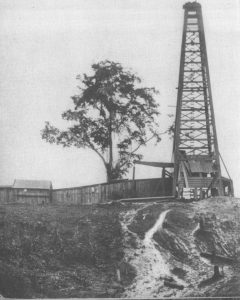 1910: Natural resources were a company’s most valuable assets. America’s leading companies grew large by spending increasing amounts of capital to acquire and exploit oil, mineral deposits, forests, water, and land.
1910: Natural resources were a company’s most valuable assets. America’s leading companies grew large by spending increasing amounts of capital to acquire and exploit oil, mineral deposits, forests, water, and land.
1946: Post-World War II, companies took a lesson from the military and applied systems to everything for increased efficiency, predictability, and productivity. This move resulted in a command-and-control leadership style Baby Boomers (1946-1964) were raised knowing.
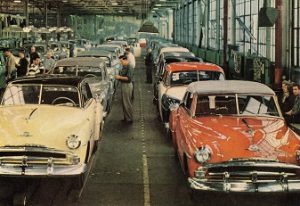 1955: An insatiable appetite for American-made cars spurred the manufacturing industry. Companies needed labor, but mainly for routine-intensive jobs. When turnover occurred, those jobs were easy to fill, and individual workers had little bargaining power.
1955: An insatiable appetite for American-made cars spurred the manufacturing industry. Companies needed labor, but mainly for routine-intensive jobs. When turnover occurred, those jobs were easy to fill, and individual workers had little bargaining power.
1963: A relatively new breed of corporation made the list of largest companies: IBM. This company was wasn’t reliant on automation or natural resources. Rather, scientists, engineers, marketers, and salespeople were at the heart of IBM’s competitive advantage.
 1965: Business growth dominated the economy and more jobs began to require creativity, as well as independent judgment and decision-making skills. The concept of talent (utilizing skills, knowledge, and ideas) began to emerge.
1965: Business growth dominated the economy and more jobs began to require creativity, as well as independent judgment and decision-making skills. The concept of talent (utilizing skills, knowledge, and ideas) began to emerge.
1998: Google was founded by Larry Page and Sergey Brin, ages 25 and 24 respectively, ushering in an era of rule-breaking and innovation among people who would have once been regarded as too young to lead or influence.
 2016: Topping the largest companies list were Apple, Microsoft, and Google, all talent-dependent companies. People under the age of 35 were starting more companies, managing bigger staffs, and realizing higher profits than any of their predecessors.
2016: Topping the largest companies list were Apple, Microsoft, and Google, all talent-dependent companies. People under the age of 35 were starting more companies, managing bigger staffs, and realizing higher profits than any of their predecessors.
Clearly, change has happened. We’ve moved into a Talent Economy and the focus is on human capital. The irony is while most organizations are now prioritizing the recruitment and retention of talent, few have actually been successful at it. In fact, employee turnover has become a major concern. Gallup reports that young professional turnover alone costs U.S. companies an estimated $30.5 billion per year.
Why? Because there’s a gap in our workforce.
In the past, organizations were built for scalable efficiency. Jobs were well-defined and organized to support processes and forecasts. Workers were trained to protect information and any collaboration with those outside of the organization was highly monitored or even discouraged.
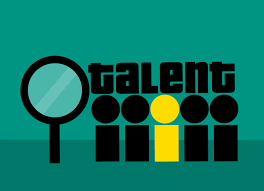 Now we’ve moved into the 21st century—the Talent Economy—and the generations born into this era have little to no memory of the last century’s methodologies. They struggle to comprehend why decisions can’t be made on the fly, why they can’t have a seat at the decision-making table, and why it’s always been done ‘that way.’ They’ve been raised in an era fueled by collaboration, globalization, mobility, flexibility, transparency, and creativity. Anything else seems foreign and irrelevant to them.
Now we’ve moved into the 21st century—the Talent Economy—and the generations born into this era have little to no memory of the last century’s methodologies. They struggle to comprehend why decisions can’t be made on the fly, why they can’t have a seat at the decision-making table, and why it’s always been done ‘that way.’ They’ve been raised in an era fueled by collaboration, globalization, mobility, flexibility, transparency, and creativity. Anything else seems foreign and irrelevant to them.
Hence, we have a problem: an ever-widening gap between the 20th century-managed organizations, and the 21st century-raised workforce. This gap has widespread effects, including employee turnover, disengagement, and challenges finding talent. This means that every organization – including the military – needs to seriously reconsider how to find and keep talent.
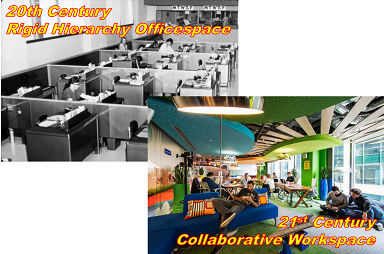
This situation is likely to get worse before it gets better largely because Baby Boomer retirements are escalating. Take the Army for instance. In 2018, the Army started out its fiscal year with an ambitious task: To bring in 80,000 new active duty soldiers. The military branch fell short of its goal partly due to a large number of senior personnel retirements. The Army Times reported that retention had “stopped the bleeding of missed recruiting goals,” but the balance isn’t sustainable in the long-term because the Army “could end up with more leaders than soldiers to lead.”
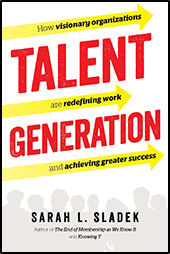 Turnover, decline, and uncertainty about the future doesn’t have to be the reality for any organization. I’ve spent several years researching generational behaviors and the employee engagement practices common among the most successful organizations in existence today. In brief, here are six of my key findings, which I also outline in my latest book, Talent Generation (2018).
Turnover, decline, and uncertainty about the future doesn’t have to be the reality for any organization. I’ve spent several years researching generational behaviors and the employee engagement practices common among the most successful organizations in existence today. In brief, here are six of my key findings, which I also outline in my latest book, Talent Generation (2018).
If you want to engage the next generation of talent, this is exactly what you must do:
Put Ego Aside
 In the 20th century, leadership was often the equivalent of power, fueled by a top down, ‘do-it-because-I-said-so’ approach to management. Today, the organizations boasting the highest employee engagement are led by leaders who exhibit a strong sense of passion, humility, and urgency. They are willing to learn from others and take risks. Unlike their 20th-century predecessors, these leaders are visionary, collaborative, and swift, never losing sight of their organization’s core purpose or wavering in their desire for change.
In the 20th century, leadership was often the equivalent of power, fueled by a top down, ‘do-it-because-I-said-so’ approach to management. Today, the organizations boasting the highest employee engagement are led by leaders who exhibit a strong sense of passion, humility, and urgency. They are willing to learn from others and take risks. Unlike their 20th-century predecessors, these leaders are visionary, collaborative, and swift, never losing sight of their organization’s core purpose or wavering in their desire for change.
Practice Acceptance
 The organizations boasting high employee engagement are those that spend a considerable amount of time thinking about change and preparing for it. They also spend a considerable amount of time thinking about how to hire the best and build the best teams. The fact is, employee engagement is an impossible feat in the midst of distrust, stereotypes, and hierarchies. Today’s most successful organizations are accepting of new ideas and new people and intentional about building relationships.
The organizations boasting high employee engagement are those that spend a considerable amount of time thinking about change and preparing for it. They also spend a considerable amount of time thinking about how to hire the best and build the best teams. The fact is, employee engagement is an impossible feat in the midst of distrust, stereotypes, and hierarchies. Today’s most successful organizations are accepting of new ideas and new people and intentional about building relationships.
Put People First
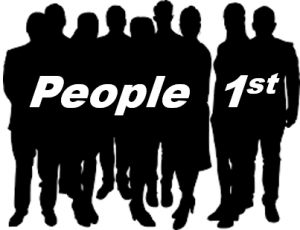 Being truly talent-focused means prioritizing your people above all else. In a talent-focused organization, the entire team is empowered and encouraged, always part of the discussion, and there’s an effort to incorporate young talent into everything.
Being truly talent-focused means prioritizing your people above all else. In a talent-focused organization, the entire team is empowered and encouraged, always part of the discussion, and there’s an effort to incorporate young talent into everything.
Stay Future Focused!
 It’s imperative that all organizations ask: How do we rebuild around what we need to be next, rather than what we used to be? Organizations boasting high employee engagement are focused on creating the future, not responding to it. They pay attention to trends, set aside time to contemplate their futures, and dialogue often with younger generations.
It’s imperative that all organizations ask: How do we rebuild around what we need to be next, rather than what we used to be? Organizations boasting high employee engagement are focused on creating the future, not responding to it. They pay attention to trends, set aside time to contemplate their futures, and dialogue often with younger generations.
Collaborate
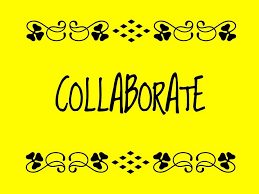 Innovation naturally happens through and exists within collaboration. And the best organizations harness innovation from their employees and outsiders—especially those from younger generations. True collaboration isn’t limited to doing one project every once in a while; it’s a sustained strategy which maximizes individual contribution while leveraging the collective intelligence of everyone involved.
Innovation naturally happens through and exists within collaboration. And the best organizations harness innovation from their employees and outsiders—especially those from younger generations. True collaboration isn’t limited to doing one project every once in a while; it’s a sustained strategy which maximizes individual contribution while leveraging the collective intelligence of everyone involved.
Build a Better Future
 We have moved rapidly into a global, technologically advanced, knowledge-based economy. Presently, our schools are preparing students for a world we can’t even imagine, and they’re struggling to adapt and make the school-to-work connection. Many of today’s leading organizations have aligned with student-focused initiatives, and it’s critical that representatives of military, business, and industry find a way to get involved in school programming, outreach, partnering, and education. New research indicates that students hone in on a career path as early as sixth grade, so the connection must start before a student’s junior or senior year in high school.
We have moved rapidly into a global, technologically advanced, knowledge-based economy. Presently, our schools are preparing students for a world we can’t even imagine, and they’re struggling to adapt and make the school-to-work connection. Many of today’s leading organizations have aligned with student-focused initiatives, and it’s critical that representatives of military, business, and industry find a way to get involved in school programming, outreach, partnering, and education. New research indicates that students hone in on a career path as early as sixth grade, so the connection must start before a student’s junior or senior year in high school.
As we move from the computer age into the cyber-age, the workforce crisis will become even more apparent as new industries, jobs, and skills emerge. The real issue is no longer talent management; it’s talent generation. It’s imperative that organizations engage younger generations of talent, and help train and prepare future talent.

Talent is our nation’s greatest asset. Talent is the heart and soul of every organization, and developing that talent has become more urgent and important than ever.
We cannot become a nation that relies on others to manufacture, create, and innovate. We cannot sit back and wait for someone else to solve this problem. If we do, we continue to fail.
We cannot be apathetic towards our future, thinking it will be someone else’s problem to solve. If we do, we continue to fail.
Without talent, we have much to lose. Without talent, we have no purpose, no future, and no hope. Without talent, society fails. So let’s put an end to the workforce crisis and seek to innovate, embrace change, and move our organizations into this next century. Let’s make work work again.
In the post above, Ms. Sladek shared her insights for successfully generating, recruiting, and retaining human capital, the sine quo non of innovation. Mad Scientist wants to hear your thoughts on The Operational Environment: What Will Change and What Will Drive It – Today to 2035? Learn more about our current crowdsourcing exercise here and be sure to get your submissions in NLT 1700 EDT Next Monday — 15 July 2019!
If you enjoyed this post, please also see:
– BrAIn Gain > BrAIn Drain: Strategic Competition for Intellect
Sarah L. Sladek is the founder and CEO of XYZ University, LLC, a future-focused management consulting firm. In addition, she is the author of five books and several research papers on generations, membership and employee engagement, and the future of work. Her latest book is Talent Generation: How Visionary Organizations Are Redefining Work and Achieving Greater Success. Twitter: @SarahSladek. Web: www.xyzuniversity.com




This is both a question and a test of the system. The two-part question is who sees these Mad Sci blog posts, articles, discussions, etc…, and who is the most senior person who sees them? I love making mental hay and getting the brain cells firing with these discussions but if they never get to people who will make change based on them, we might as well just all be on some random blog someplace “posting into the wind” for all the impact we will have.
The test is if someone who can answer that question reads these comments, I would hope to get a reply. If not, my questions will be answered.
I’m the lead developer for TRADOC G2 OE Portal. I am a contractor and have no decision authority, but we still have a significant ability to shape our systems since we are the ones presenting courses of action to decision makers.
I read this article because we have had to develop our talent. I have been taking intelligent highly motivated people whom have never written code, and teaching them HTML, CSS, JavaScript, ASP.Net, and C# within the SharePoint framework. Within a month they are building basic pages, and within 4 months they are building more advanced pages/tools that integrate in the rest of the system. Developing talent has not been as difficult as keeping talent.
Brian – I am so glad to hear that you are developing talent. Skills can be taught as long as the talent has the willingness and drive to learn. You mentioned that keeping talent is the real concern. For what it’s worth, our research indicates that turnover is most likely to occur when one of these two things occur:
1.) The employee feels like they don’t belong. Belonging by definition means two things – having a sense of ownership in the organization and having a strong relationship with the people we work with. If the employee feels disconnected, disrespected, or distrusting of the organization or the team, they will leave. Great Places to Work has long studied the traits of organizations with the highest employee engagement. They claim that trust is the number one indicator as to whether employees will engage and stay at an employer long-term. If they don’t trust their leaders or co-workers, or feel their leaders and co-workers don’t trust them, they disengage. Relationship-building isn’t just a ‘warm and fuzzy’ thing to do. Culture really does impact the bottom line.
2.) The employee feels bored. Millennials and Gen Z are accustomed to multi-tasking and tend to be quick learners. Our research indicates they place a high value on being mentally challenged and the opportunity to be creative. As soon as they master a task, they want to learn something new or be challenged in a new way. This may mean being trusted to lead a project, or moving into a new department. And when the employer isn’t responsive to these needs, they will job-hop so they can continually learn new skills. This restlessness is partly rooted in their fear of going through another recession. These generations were heavily influenced by the recession and seek to be as marketable as possible by continually learning new skills.
Excellent point! Change needs to start at the top — with leadership. But I have seen some very effective grassroots approaches to change, as well. If the leaders aren’t paying attention, it’s critical the people answering to those leaders do their part to advocate for change. To you and to others reading this blog, I urge you to share the posts that resonate with any and all leaders you know.
Mr. Kramer, please rest assured that Senior Leaders in the DoD, Army Secretariat, HQDA, and ACOMs are reading this blog site’s content…
… and thank you for being a regular consumer of and commenter on our blog posts. Would love for you to craft and submit a guest blog submission for us regarding the Operational Environment and warfare. Cheers!
Thank you very much! And wilco; just need to sort thoughts and scope. Want to help the team however possible.
I feel this conversation is dependent on what talent we are seeking to retain. Retention is driven by MOS, not the ability of Soldiers/Leaders to innovation. Theoretically this is the nature of promotion.
Considering that the Army is a hierarchal power structure, we still follow the leadership model of 1946, as specified by the blog author. Power still has the ability to override talent, innovation, and creativity.
Another aspect of hierarchal power is that it tends to direct both task purpose AND method/means of execution. Our operations orders are still too deep and specific. We have lost the art of simplicity. We expect each subordinate unit to execute tasks (based on higher level analysis) rather than collaborate on how to accomplish the mission.
Some of this may have changed over the years, but as long as we rely on individuals making decisions rather than teams of leaders then the Army is going to prioritize the ability to consolidate and wield power rather than creative talent. And that may not necessarily be a bad thing, we rely on disciplined movement of formations rather than innovative decision-making. Our innovation occurs at the grand scale in weapons design, with user innovation and/or feedback towards the front lines. From what I have witnessed, we have gotten much better (such as use of Cross-Functional Teams in the design phases of acquisition) at being more collaborative and innovative in some areas.
There is still a pretty big line drawn between the force generation and force application segments of the Army. Perhaps this is where we need to look to try to close the gap between power and talent
Thank you for sharing your thoughts! When it comes to the topics of change and the future, there is often a tug-of-war that emerges. Whether its medical, manufacturing, military or some other field, I often hear resistance in the form of this: ‘We can’t consider doing anything different. We must get people to follow an order or a process otherwise we can’t control the outcome and if we can’t control the outcome the risk is too high’. This fear is understandable. If I’m having a surgery, I certainly want an experienced and decisive doctor in the room! Experience and effective leadership are key to the success of every team and organization. But, the fact of the matter is, we can’t rely on experience alone anymore. We’ve relied on hierarchies since the beginning of time, but the sustained disruption and innovation of today’s world is requiring our leaders and teams to be more agile, visionary, and collaborative than ever before. Furthermore, it’s been proven that the best leaders are willing to learn and teach. These leaders empower their teams and are willing to work side-by-side with them. So I agree with you. We can’t just require people to execute tasks, and the Army must continue to find ways to collaborate and challenge those fears and traditions that hold them back. Experience is important, but so is teamwork. And recent history has taught us that when we stop prioritizing teamwork and talent and planning for the future — there likely won’t be any teams or talent or future there.